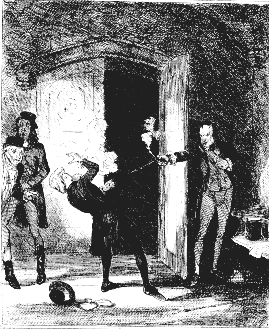FIRSTS
Sir Robert Walpole entered office on April 1, 1721 as the first Prime Minister of the United Kingdom under King George I.
 |
| Robert Walpole |
Sir Robert Walpole resigned on February 11, 1742 over the alleged rigging of the Chippenham by-election. He had served 20 years and 314 days as prime minister, the longest single term and longer even than the accumulated terms of other British PMs who held the office more than once.
The British prime minister Spencer Perceval was on his way to attend the inquiry into the Orders in Council on the evening of May 11, 1812. As he entered the lobby of the House of Commons, a man stepped forward, drew a pistol and shot him fatally in the chest. He was the first, and to date only, British Prime Minister to be assassinated.
 |
| 19th century illustration of Perceval's assassination in the Newgate Calendar |
George Canning (1770-1827). was Britain’s shortest-serving prime minister — he died of pneumonia after just five months in office.
The last British Prime Minister from the House of Lords was Robert Gascoyne-Cecil, 3rd Marquess of Salisbury from 1895–1902. When time came to appoint his successor it was felt that he should be an elected MP from the House of Commons instead... and they have been ever since.
Sir Henry Campbell-Bannerman was the first "actual" British Prime Minister. Until the 18th century, the monarch's most senior minister could hold any of a number of titles; usually either First Lord, Lord Chancellor, Lord Privy Seal, or one of the Secretaries of State. During the late 18th Century, the term "prime minister" came to be used. The title was officially recognized by King Edward VII, in 1905, five days after Campbell-Bannerman was elected.
In October 1963, Alec Douglas-Home became the last Conservative Party leader to achieve office not by election but by what was termed "emergence". As the party was in power at the time, his position was confirmed by his being sent for by the Queen to "kiss hands" and receive the seals of office.
Douglas-Home was also the last Prime Minister to have previously sat in the House of Lords.
Margaret Thatcher became Britain's first female Prime Minister on May 4, 1979.
RECORDS
The tallest UK prime minister was Lord Salisbury, who stood at 193 cm (6ft 4in). He served as prime minister three times between 1885 and 1902.
The shortest UK prime minister was Lord John Russell at 164cm (5ft 4in). He served as Prime Minister on two occasions during the mid-19th century. His Government of 1865 to 1866 might be described as the first Liberal Government.
 |
| Lord John Russell in 1861. |
The most youthful prime minister was William Pitt the Younger, who was appointed at the age of 24.
Britain's richest prime minister was Edward Stanley, 14th Earl of Derby, who was worth about £7m (£765m today) at his death in 1869.
The oldest was William Ewart Gladstone, who was prime minister four times and 84 when he finally left office.
The shortest-serving Prime Minister in UK history is Liz Truss, who served for just 49 days in 2022. Truss took office on September 6, 2022 and resigned on October 25, 2022, following economic turmoil and widespread criticism of her government’s fiscal policies, particularly the "mini-budget" which led to market instability and the pound dropping to record lows.
FUN PRIME MINISTER FACTS
On November 28, 1990, John Major became the only prime minister in the 20th century who’d not been an Opposition MP first.
UK prime ministers Ramsay MacDonald, Neville Chamberlain, Anthony Eden, Harold Macmillan and Gordon Brown all chose to be known by their middle names.
UK prime ministers Ramsay MacDonald and Neville Chamberlain both died on November 9, in 1937 and 1940 respectively.
No UK prime minister has ever died in June.
No comments:
Post a Comment